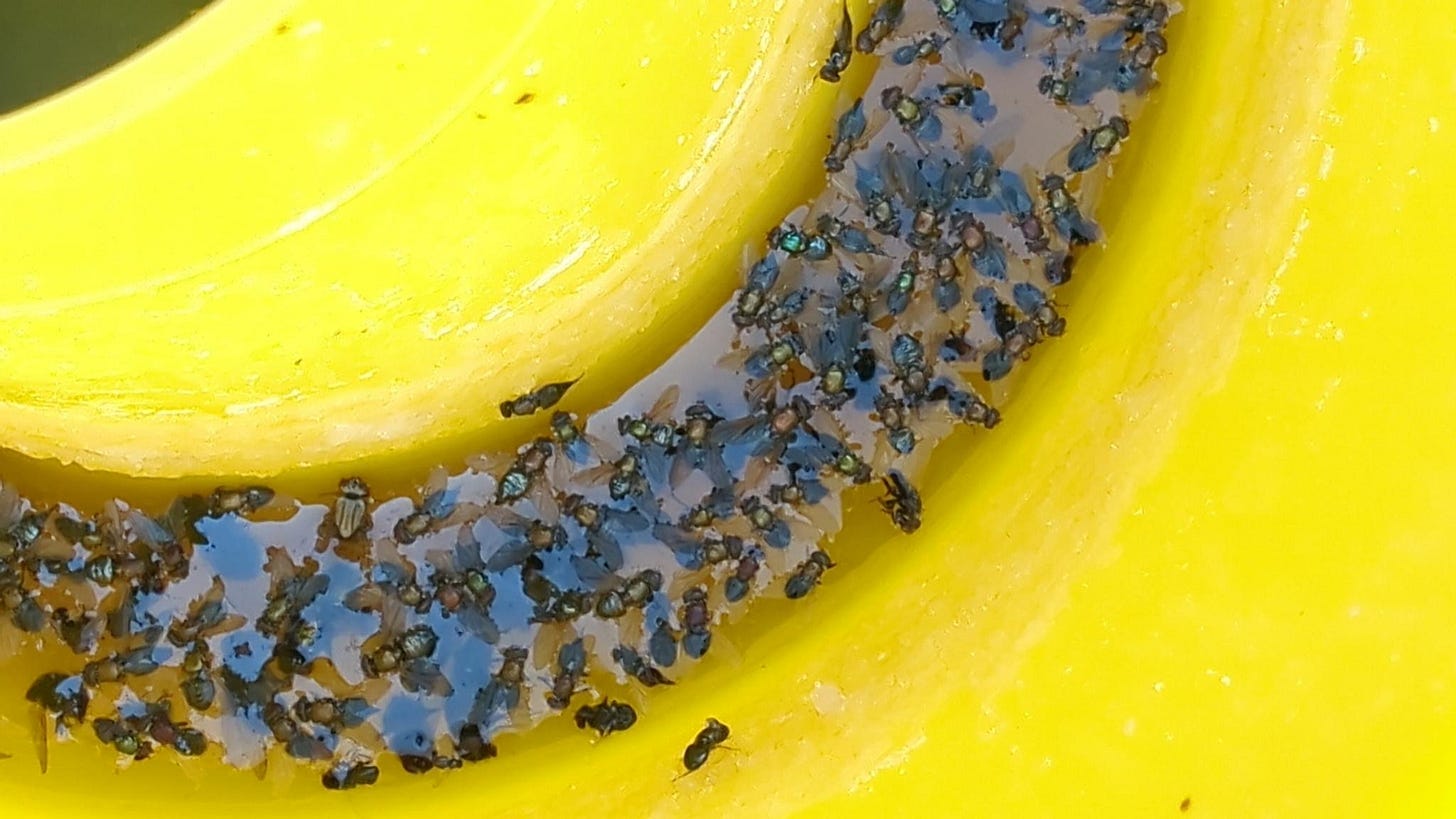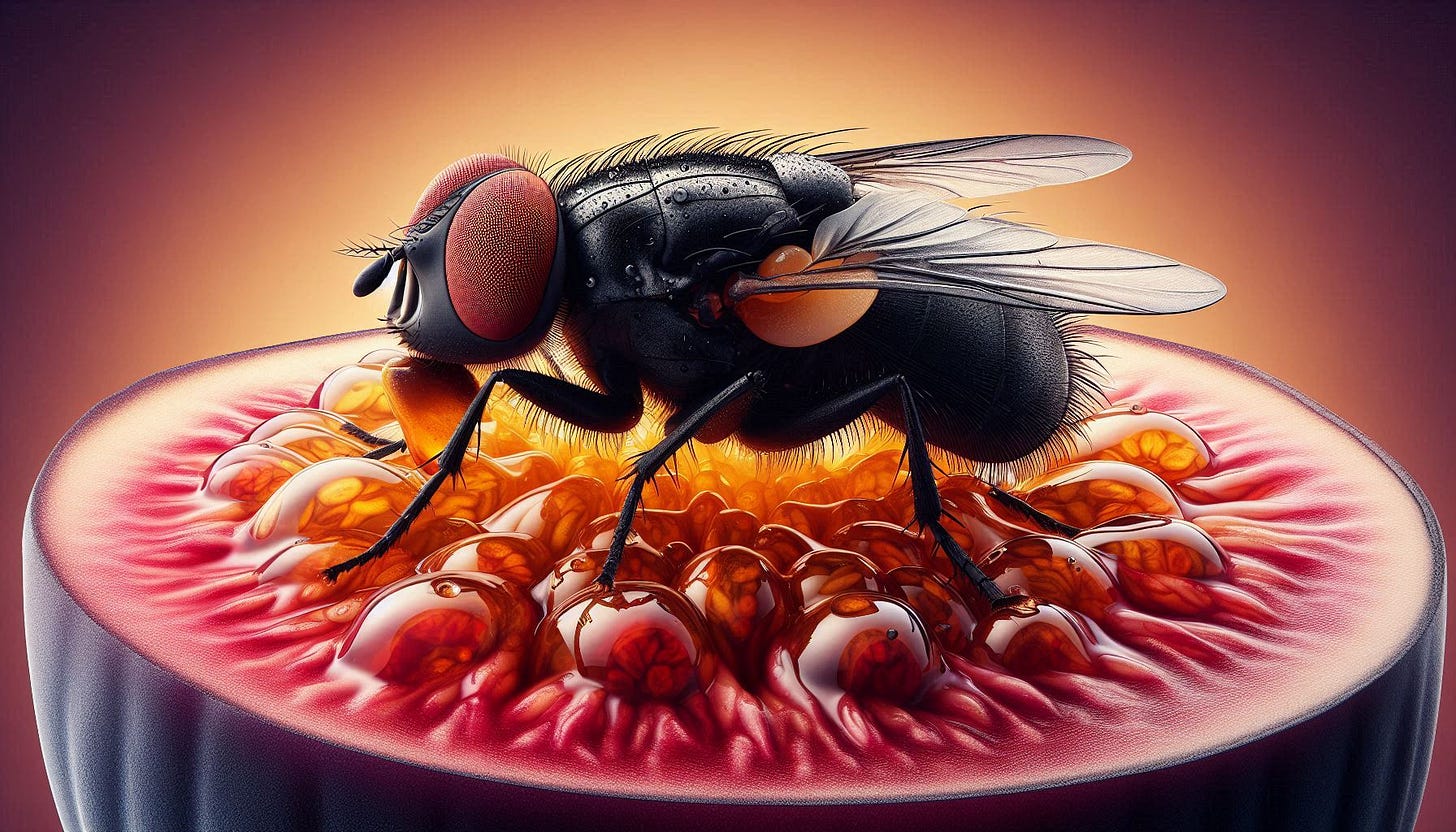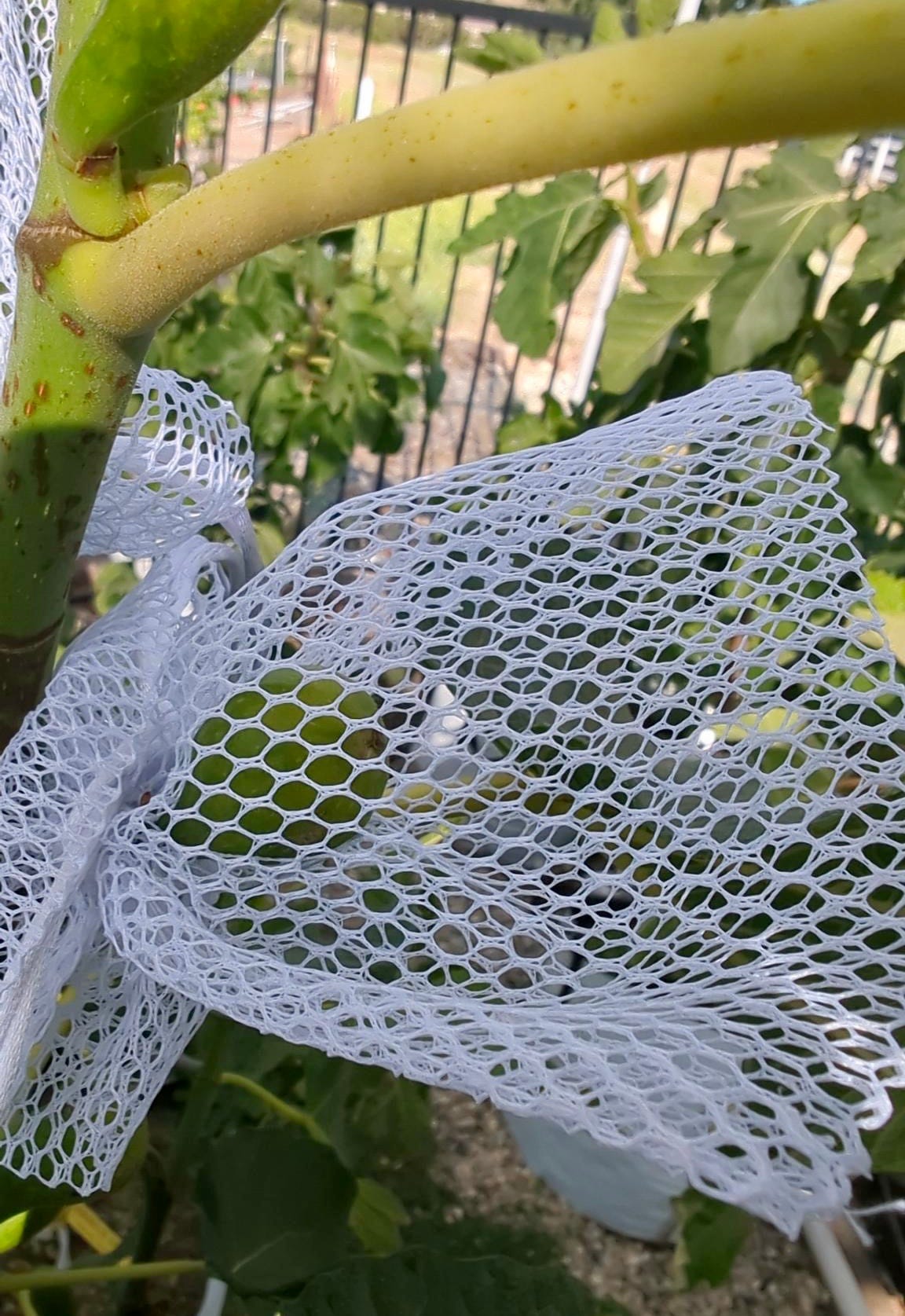The Black Fig Fly & How It Goes This Season
A report and update for those dealing with the buggos…
As many of you know, I have been trying to combat the Black Fig Fly using natural methods. So, how is it going this season? Here is a full report!
For those wondering what in the world a “black fig fly” is, this is a type of fruit fly that hit California really hard in the last few years. It is also found in other places around the world where figs typically grow. Its scientific name is Silba adipata McAlpine or Diptera: Lonchaeidae: Silba adipata. You can read more about it here and here. The Black Fig Fly (here on out abbreviated BFF,) lays eggs in the ostiole of small, unripe figs — usually between the blueberry and walnut sizes of a figlet. The larvae hatch inside the fig and then they eat through the fig as they tunnel their way out to later pupate in the ground before becoming juvenile flies. This process ruins the fig fruit before it even gets close to ripening and causes it to drop from the tree. So definitely an undesirable issue. This is just a quick, simple synopsis here, more details on BFF can be said and are on other sites.
What I’ve done in the past…
I have used McPhail traps with a fermented peach extract and erythritol bait successfully in the past. According to research studies, erythritol acts as a type of birth control in fruit flies, so it was added in case any flies managed to escape. It caught a TON of fruit flies, including the Walker fly which is a lookalike to BFF, and considerably reduced my losses. (Walker flies are often seen where BFF are, but they affect ripe or spoiling figs instead of baby green figs.) However, it was very labor-intensive to set up all of the traps for the quantity of fig trees I grow especially because the bait needed to be refreshed every few days. This added up in cost as well. I also found that not all McPhail traps are created equal as far as BFF is concerned. One brand (IPS Liquibaitor) would catch flies and the other brand (Scentry Multilure) would not catch any. This bait also caught a particular beneficial insect so I wasn’t too crazy about that.

I also tried sprays with essentials oils, in particular basil. This worked very well, but could burn the leaves if done too often or too strong. It also adds up in cost over time. However, certain essential oils seem to work very well as a deterrent to BFF. Linalool has been studied in research as affecting fruit flies’ abilities to oviposit and navigate correctly, basil is one EO that can have a high level of linalool. A side effect is that it also relaxes you as you spray it!
I’ve tried bagging my figs with mesh bags that have larger holes to allow for wasp pollination as well. These did work, but again this is labor-intensive and while there was still wasp pollination, it was a lot less than usual. There also seems to be an issue with bagging small figs in that they sometimes spoil or fall off.
Other people have tried whole tree netting with good success. Some of these also will still allow for wasp pollination. The caveat is that the tree needs to stay small and accessible enough to bag the whole tree and if you have many trees, again this is labor-intensive and adds up in cost. Still a really good option for many though.
Others have been having really good success using spinosad, especially when combined with molasses. I’m happy for those having success with this, but it is not an option I want to use. I find research on the human effects of these insecticides is often very limited. While spinosad is different, some of these insecticides, especially systemic ones, can break down into chemicals more harmful than the original form that linger in the plant. I also always wonder at the “other” ingredients which are not disclosed that make up the bulk of these sprays. Most especially though, I am trying to build up soil and canopy health; spraying insecticides has a negative effect on this and does exactly the opposite of what I am trying to accomplish. Again, this is me and my preference. You do you as they say. 🙂
Edited to add: I forgot about taping the ostiole! Many have done that with a lot of success. Some use medical tape, others painters tape, and yet others use Avery dot labels. I think this is another great option for preventing BFF issues. It does also stop wasp pollination, but if you’re up for hand pollinating, it can work very well hand in hand with that as well.
What I have done this season…
If you don’t know this, well you really need to check out the archive here! 😉 I have been detailing this quite extensively so there are a few articles to read if you’ve missed them. But in a nutshell, I have been trying to build up plant Brix levels in my trees as insects are only attracted to low Brix plants. (This is leaf Brix, not fruit Brix, and gives an indication of photosynthate and total dissolved solids in plants which in turn is an indicator of overall health.) I also have been using nutrients in harmony with redox potential (Eh-pH) to the extent possible.
To build up Brix, you need minerals, especially calcium and micros. I used a few fertigation units to water in JADAM liquid fertilizer, fish amino acids, water-soluble seaweed, and solution-grade gypsum. I also started foliar spraying weekly as the season began to help with this. I rotated what I sprayed by week.
Early in the season, I rotated LABS or EM-1, vinegar extracted calcium, seaweed and fulvic acid, and blackstrap molasses. Once I noticed the very start of main crop figlets forming, I added in ingredients that are known to repel insects. This included neem emulsified with potassium silicate every other week. I frequently used soap nut liquid as an emulsifier for my foliar sprays and it also can repel insects. I also added liquid smoke into the rotation later on as it has both health promoting benefits and can repel insects.
Liquid smoke is essentially wood vinegar, or at least a poor man’s form of it. Wood vinegar has a lot of benefits for plants and I was turned on to it by reading some of Earthly eccentrics articles mentioning it. If you buy liquid smoke, you need the type without additives, flavorings, or seasoning, like Lazy Kettle or Wright’s Liquid Smoke. The ingredients should just say smoke and water. I sprayed this diluted once a month.
The results so far…
I’ve only lost about 15 figs early in the season to BFF. That’s it out of hundreds of figs. Most of those lost were from the breba crop. I also had two trees that seemed especially affected by BFF this year, meaning more than one fig fruit had larvae.
The things is, I know my Brix levels are not up to the levels I want. I know this because I still have fig mites on a few trees, which indicates levels are low on those trees. I also had some leaf eaters on other trees earlier in the season.
So I’m not sure why my BFF losses are so low this year. It could be coincidence if the amount of BFF in my area is lower this year. But I think it more likely that the regular foliar spraying deterred them as the foliar sprays themselves have scent and BFF seems really sensitive to that. What I like about this is that it essentially killed two birds with one stone: 1) BFF was prevented, and 2) I did something that needed doing anyhow, which was building up my trees’ health. So I wasn't having to do extra work just to prevent BFF losses.
A side benefit of this was that certain fruit trees that weren't fruiting at all or fruiting little put out a lot of figs this year. This just shows how important nutrients are to plants whether you are dealing with insects or not. Getting that terrain right and conducive for health just brings so many benefits.
BFF seems to affect figs only through certain months for me, so I was able to cut down the frequency of foliar spraying starting in July which did not have any adverse effects. Whereas in years past, I had to keep up my efforts through to September to avoid BFF issues.
One potential negative aspect is that I lost a lot of Smyrna figs due to lack of pollination. This actually is not unusual for me as wasp pollination is not reliable here. But I feel it worth mentioning for full disclosure since I don’t know if neem or other things could interfere with that for others who do have reliable wasp pollination. That said, certain ones definitely were pollinated so I know a small amount of wasps did successfully visit some of my trees, hubba hubba. 😜
This is just an early update on the journey to high Brix trees. I still have a fair way to go, but I am pleased so far. Every person and area is different, so what works for me may not work for you. Just the same, I hope this inspires others to pursue plant health over poisons since health is the ultimate eliminator of problems like this no matter where you are growing.







That wood vinegar could really be disruptive to its senses…that’s fascinating.